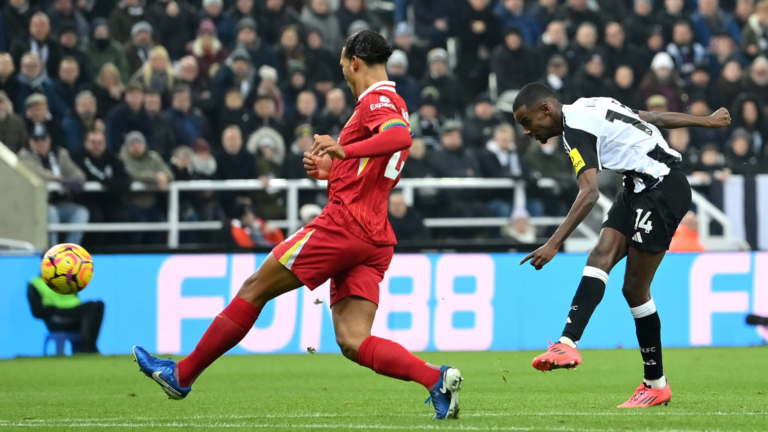“Sweden’s Dominant 6-0 Victory Over Azerbaijan: A Comprehensive Match Analysis and Insights”…
Sweden 6:0 Azerbaijan – Comprehensive Match Report
Introduction
In a thrilling UEFA Nations League match, Sweden showcased their prowess by securing a dominant 6-0 victory over Azerbaijan. The game took place in a packed stadium, with an energetic Swedish crowd cheering their team to a resounding win. Sweden’s performance was marked by precision, technical skill, and a strong offensive strategy that Azerbaijan struggled to counter. This match highlighted the current form of both teams, with Sweden’s tactics and star players shining, while Azerbaijan showed areas in need of improvement. Fans and analysts alike were particularly impressed by Sweden’s lead striker, who delivered a memorable performance that sparked conversations across the football community.

Pre-Match Expectations
Prior to the game, the expectations for Sweden were high, given their recent successful performances. Swedish fans were eager to see their team continue its upward trajectory, especially against an Azerbaijan side that has been undergoing a rebuilding phase. Sweden’s coach emphasized the importance of maintaining focus and using this match to test certain tactical setups ahead of more competitive fixtures. On the other hand, Azerbaijan approached the game as an opportunity to assess their squad’s progress and give their younger players experience against a top European side. While Sweden was widely favored, Azerbaijan’s coach reminded everyone of the unpredictable nature of football and expressed hope that his side could keep up with Sweden’s pace.
First Half
From the very beginning, it was evident that Sweden intended to dominate. The first half was characterized by Sweden’s control over possession, quick transitions, and fluid passing, which created several scoring opportunities. Sweden’s midfield, known for its technical skill and composure, dictated the tempo of the game. The midfielders worked seamlessly with the forwards, especially Sweden’s star striker, who displayed his agility, speed, and positioning skills.

The first goal came relatively early in the half, sending the Swedish crowd into a frenzy. This initial goal seemed to boost Sweden’s confidence, and they began to attack with even more intensity. Sweden’s offensive play involved clever one-touch passes, overlaps on the wings, and constant off-the-ball movement that unsettled Azerbaijan’s defensive line. By halftime, Sweden had scored multiple goals, each one reflecting their tactical approach and the players’ synergy. Azerbaijan, although outmatched, showed moments of resilience. They attempted to counterattack, but Sweden’s defense, led by an experienced backline, quickly neutralized any threats.
Second Half
The second half saw Sweden continue their momentum from the first half. Azerbaijan made a few tactical adjustments, strengthening their midfield and reinforcing their defense, but Sweden’s cohesion and tactical sharpness remained unmatched. Sweden’s players seemed more confident, attempting more elaborate plays and showcasing their technical abilities. The Swedish striker, who had already impressed in the first half, continued to be the focal point of Sweden’s attack. His movement without the ball and his ability to read the game allowed him to exploit spaces and create chances not only for himself but also for his teammates.

As the goals continued to come, Azerbaijan’s defense struggled to contain the Swedish offense. Sweden’s relentless pressure and precise passing led to more goals, widening the gap between the two teams. By the final whistle, Sweden had firmly secured a 6-0 victory, underscoring their dominance and tactical superiority. Azerbaijan’s efforts, while commendable, were ultimately insufficient against a well-prepared and highly skilled Swedish team.
Analysis of Sweden’s Star Striker
After the match, much of the discussion centered on Sweden’s star striker, whose performance was widely praised by both fans and analysts. Known for his speed, agility, and finishing ability, he delivered an exceptional display that highlighted his potential and skill. His positioning was impeccable throughout the match, often finding himself in the perfect spot to receive passes and make runs into the box. His ability to draw defenders and create space allowed his teammates to find opportunities as well, showcasing his role not just as a goal scorer but as a playmaker.

In post-match interviews, the Swedish coach commended the striker’s performance, saying, “He’s not only a goal scorer but also a critical part of our attacking strategy. His awareness, movement, and commitment are what make him an invaluable asset to our squad.” The striker’s standout performance has also drawn attention from several top European clubs, with scouts reportedly observing the match closely. With this performance, the Swedish forward has further cemented his status as a key player in Sweden’s lineup, and fans are excited to see what he will bring to future competitions.
Insights and Key Takeaways
Sweden
- Strengths: Sweden’s midfield and forward line were the highlights of this match. Their midfield controlled the game’s pace, allowing Sweden to dominate possession and dictate the flow of play. Sweden’s defense, although less tested, was effective in halting Azerbaijan’s attempts to counterattack.
- Tactical Approach: Sweden’s tactical approach involved high pressing and swift transitions from defense to offense. This style of play allowed them to capitalize on Azerbaijan’s weaknesses and create numerous scoring opportunities. The team’s synergy was evident, with players showing a deep understanding of each other’s positioning and movement.
- Standout Player: The Swedish striker was undoubtedly the star of the match, but Sweden’s overall performance was a testament to their teamwork. The striker’s ability to finish and create chances for others made him a key component of Sweden’s success in this match.
Azerbaijan
- Areas for Improvement: Azerbaijan faced significant challenges, especially in their midfield and defensive lines. Their inability to control possession limited their ability to build attacks and apply pressure on Sweden. Azerbaijan’s defense also struggled to handle Sweden’s pace and movement, resulting in a high scoreline.
- Defensive Resilience: Despite the final score, Azerbaijan’s defense did show moments of resilience, with players making last-ditch efforts to block shots and intercept passes. However, these efforts were not enough to contain Sweden’s relentless attack.
- Youthful Potential: Azerbaijan’s lineup featured several young players, who showed glimpses of potential throughout the match. These players demonstrated individual skill, which, with further development and experience, could contribute to a stronger Azerbaijani team in future international matches.
Historical Context and Rivalry
Historically, Sweden and Azerbaijan have not had an intense rivalry, as they have competed in different tiers of European football. Sweden, with its history of producing skilled and disciplined players, has often been regarded as a strong European team, known for its structured approach to the game. Azerbaijan, on the other hand, has focused on developing its football infrastructure and nurturing young talent in recent years. While there is a gap between the two teams in terms of experience and skill, matches like these provide Azerbaijan with valuable exposure to European-style football and allow Sweden to test their tactics and form.

Cultural and Economic Context of Football in Sweden and Azerbaijan
Football holds a significant cultural value in both Sweden and Azerbaijan, though the resources and level of development differ. In Sweden, football is highly organized, with strong support from both the public and private sectors. Swedish football clubs invest heavily in youth development programs, which have led to the emergence of talented players who represent the national team. This level of support has created an environment where football continues to grow and produce players capable of competing at an international level.

In Azerbaijan, football is popular, but the resources and infrastructure available to the sport are still developing. The Azerbaijani government has recently increased its investment in sports, including football, as part of a broader strategy to boost national pride and global recognition. Azerbaijan’s emphasis on sports development has led to the improvement of facilities and training programs, particularly for young athletes. Matches against European teams like Sweden offer valuable learning experiences for Azerbaijani players, who gain insight into the discipline and intensity required to compete at the highest level.
Conclusion
The Sweden-Azerbaijan match was a testament to Sweden’s current strength and the potential for further growth in Azerbaijan’s football program. Sweden’s dominant 6-0 win demonstrated their technical skill, team cohesion, and readiness for future competitions. The performance of Sweden’s lead striker was a particular highlight, adding excitement for Swedish fans and catching the eye of scouts from European clubs. Meanwhile, Azerbaijan left with important lessons that could guide their future development. As both nations continue to evolve in their approach to football, this match serves as a valuable chapter in their respective journeys, offering insight into Sweden’s position as a formidable European team and Azerbaijan’s ambitions to strengthen its national footballing profile.





